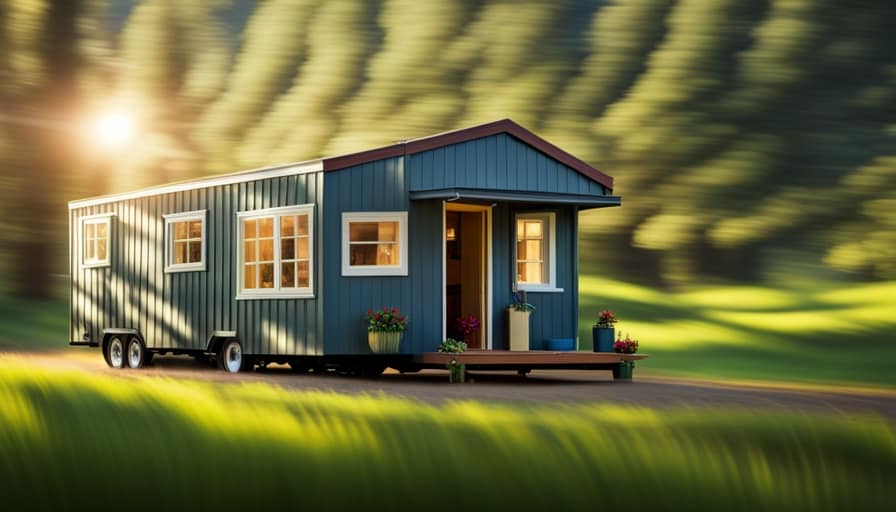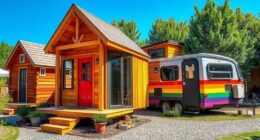When designing your new home, it is important to make energy efficiency a top priority. By focusing on this aspect from the beginning, you can avoid costly changes during construction and save time and money in the long run. Working closely with an architect to create a customized design that meets your energy needs is recommended. They have the expertise to address important details such as floor slabs, foundations, and electrical outlets.

SIPs
SIPs-based homes can be built to meet minimum R value requirements. These low-cost systems provide a tight, airtight building envelope. This means a home can reduce energy costs by up to 55%. SIPs construction has many benefits, including lower initial costs and lower operating costs. SIPs can also provide net-zero energy.
SIPs are also resistant to moisture damage. SIPs are also stronger than wood-frame construction, which can bow and weaken over time and is susceptible to termites. Steel SIPs are available in a variety of thicknesses, R-values, and can be adapted to local green building codes and tax incentives. They are less susceptible to mold and dust mites and can withstand hurricanes.
SIPs also offer ease-of-use installation. SIP-built houses are easy to install because they are prefabricated. They can be completed in as little 12 days. They allow for large open-plan rooms, flexible roof panels, vaulted ceilings, and large rooms. They also eliminate the need for traditional roof trusses, which reduces the construction time.
Another advantage of SIPs is that they are easy to install and provide an easy solution to energy efficiency. They are able to reduce heating and cooling costs by up to 60 percent and outperform stick-framed houses by 40 to 60 percent. They also block noise like few other materials can. Moreover, SIPs are made from sustainable resources. The insulation and the oriented strand board used in the construction are derived from fast-growing trees.
The SIPs structure is also extremely airtight. However, bathrooms and kitchens should be designed with proper air circulation. Energy recovery ventilation can help achieve this. SIPs cabins need a foundation. Water, electricity, and sewer must all be available on the site. Grouping SIP cabins with similar features can reduce operating costs.
Passive solar
The passive solar design optimizes the house’s orientation to capture as much natural energy as possible. This includes optimizing the placement of windows on south-facing walls. This requires a well-insulated building envelope. A glazing ratio of nine to twelve percent is the ideal, but higher ratios can lead to overheating. To mitigate overheating, passive solar design plans often include extra thermal mass on the north and east sides.
Passive solar design strategies use thermal mass to absorb the heat of the sun during the day, and then release it slowly at night. Common materials for absorbing heat include stone veneer and masonry interior walls. Exposure to dark-stained concrete floors is another way to increase thermal mass. These methods will keep the house from overheating during the day and help it cool down in the summer.
Passive solar houses have several advantages. A good passive solar design will take advantage of the climate, materials, and building site to reduce heating and cooling loads. A well-designed passive home can reduce the need for heating or air conditioning. This results in fewer electrical appliances, lower water consumption, and lower utility bills.
A passive solar house is the most energy-efficient house design in the world. It maximizes the amount of sunlight that comes in through windows. It absorbs latent heat from the air and avoids mechanical cooling. The thermal mass of a passive solar home is the ratio between the south-facing surface and the heated floor space.
Geodesic dome
Although geodesic domes have been around since the 1950’s, they have only recently become a viable option for residential building. This unique house design offers many benefits, including less heat loss and surface area. It also has many facets that trap the sun. It is possible to build a small geodesic dome to allow for an extended growing season. These domes are available in dome kits, which make them an economical choice for a low-cost home.
The architectural and scientific community quickly embraced fuller’s designs. Soon after their Italian premiere, they gained worldwide attention. They won the Grand Prix at Triennale d’Architectur in Milan in 1954. Later, the design was popularized by the United States. The military wanted strong housing for its troops stationed overseas. Later on, the geodesic dome design was adapted for use in military projects.
Geodesic domes are more durable than other house designs and their components are highly resistant fire, water and rust. This type of house is also easy to build and transport. It also uses less materials than conventional homes. Because it is easier to assemble than a conventional home, a geodesic dome is affordable to build.
Geodesic dome homes are also known for their high energy efficiency. Geodesic domes are less insulated than traditional houses because they have fewer exterior walls. This results in a lower heating and cooling bill. Natural light can also help you save money.
Aeroseal
Aeroseal is a company that has developed duct sealing technology, which it is licensing from the University of California. It uses wireless sensors to deliver the right amount of sealant and track the progress in real-time. It has received several awards and is now available for home building.
Aeroseal claims that its sealing process can pay for itself in four years. It can also lower your energy bills. It is often less expensive than replacing damaged ductwork. Aeroseal works with large builders such as DR Horton and smaller builders such as Denver-based Thrive. Venture capital has invested $30 million in the project.
The Aeroseal process applies a hot polymer glue inside ductwork. The machine contains a fan, a heater, and a manometer. It seals the air conduits, making them more efficient. It has been shown to be 95% efficient in sealing air duct leaks. The Department of Energy has recognized the Aeroseal process as one of the most important energy conservation technologies.
Although it can seal holes as small as 5/8 inches, Aeroseal is not suited for larger leaks requiring manual sealing. Therefore, it is a better option for home owners with ductwork that is difficult to access. Some examples of inaccessible ductwork are metal trunk systems, first-floor ductwork in two-story homes, and flat roofs.
If you’re a home owner, you’ll want to find a way to create a house that is as energy-efficient as possible. It can help reduce your energy bills and decrease your dependence on the grid. Energy-efficient designs also make cooling and heating systems last longer, which helps reduce the need for repairs and replacements.
Hi, I’m Emma. I’m the Editor in Chief of Tiny House 43, a blog all about tiny houses. While tree houses are often associated with childhood, they can be the perfect adult retreat. They offer a cozy space to relax and unwind, surrounded by nature. And since they’re typically built on stilts or raised platforms, they offer stunning views that traditional homes simply can’t match. If you’re looking for a unique and romantic getaway, a tree house tiny house might just be the perfect option.










